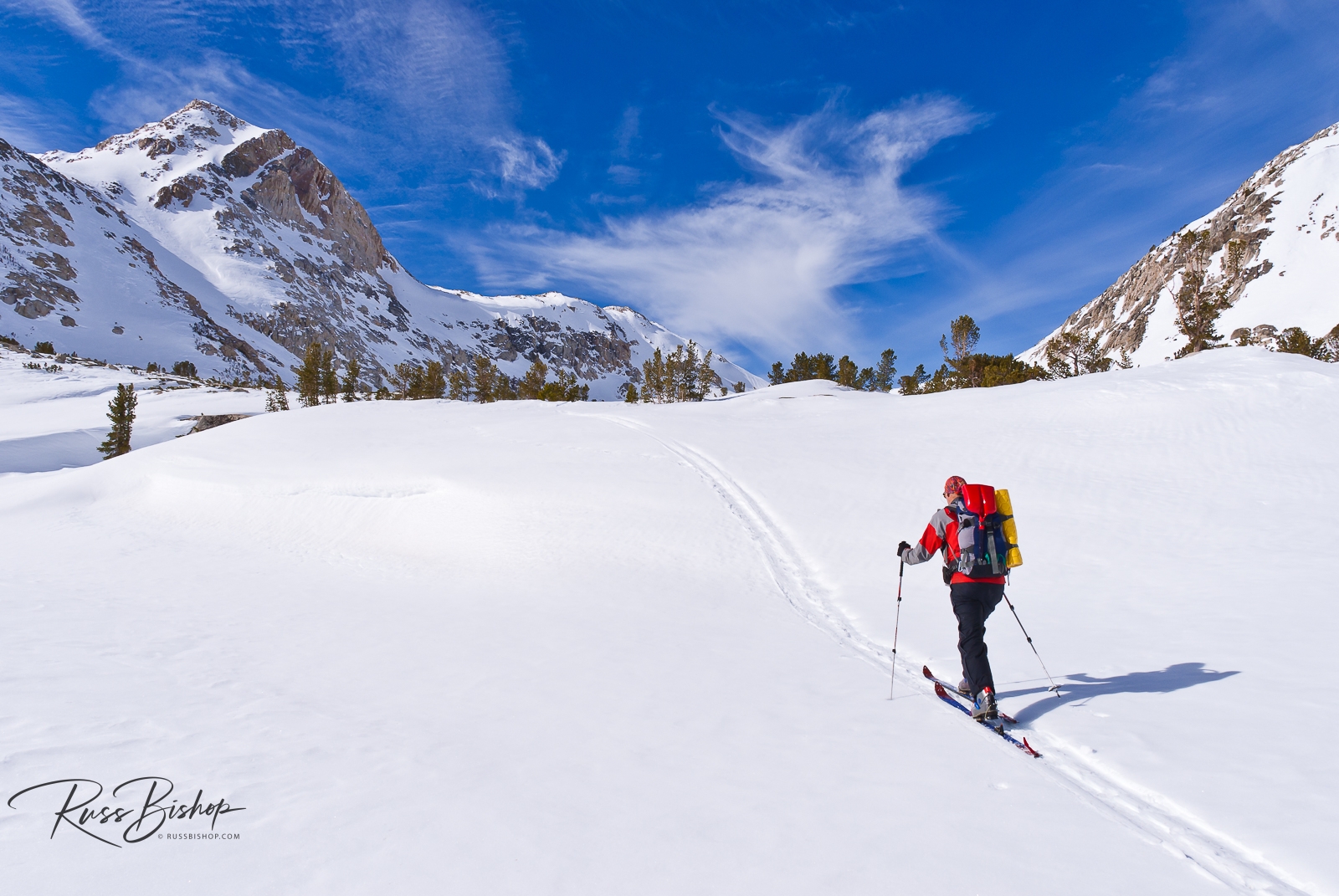
Backcountry skiing opens up a whole new world of travel, sport and photographic possibilities. Locations in my local Sierra Nevada Mountains, which are crowded and require permits long in advance during the rest of the year, are quiet and often untouched during the winter months.
Temperatures can drop to -20 degrees Fahrenheit so proper equipment is a must (think REI and Patagonia), but the reward is experiencing your own private ski bowls and perfect mountain landscapes just waiting to be photographed.
This image was made in the John Muir Wilderness where a fresh blanket of snow provided a pristine scene to rival the Alps or Canadian Rockies. It’s hard to imagine that just two months earlier this location was bustling with visitors chasing the fall colors, but on this three day trip we didn’t see another soul.
For those looking to experience the Sierra in the winter months, but who aren’t prepared with overnight gear, several businesses in the towns of Bishop and Mammoth Lakes offer day trips and overnight hut arrangements. Either way, there’s a beautiful untouched world out there just waiting to be explored.
©Russ Bishop/All Rights Reserved


